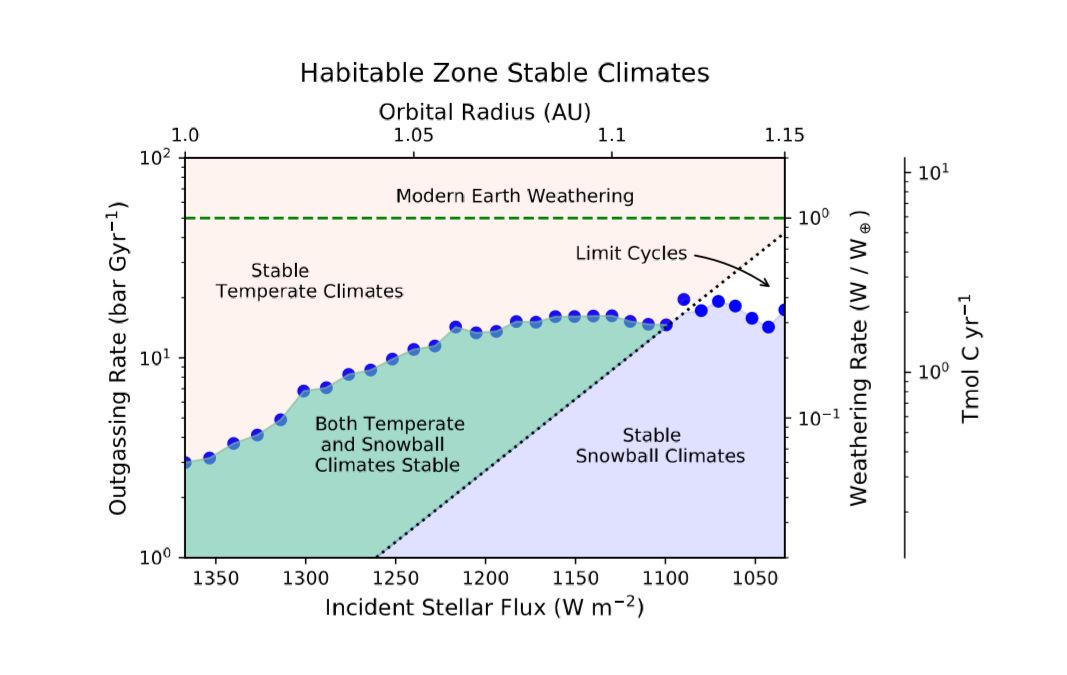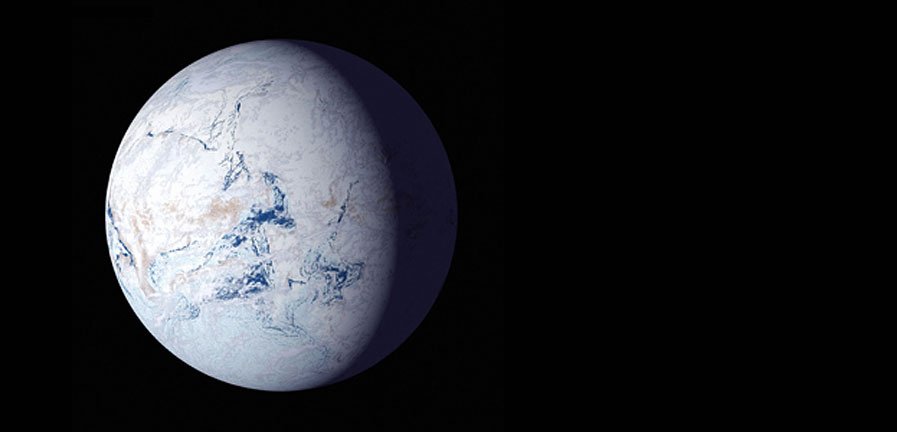Life might also exist on cold planets
Our Earth has already lived through several ice ages, during which the oceans were covered with ice all the way down to the equator – so-called Snowball eras. Life on our planet has survived all these times; primarily due to one reason: at the time, life existed only in the oceans, and the depths of the oceans still offered good conditions for life. What would have happened if life had already made its way onto land? That was the basis of a study done by Canadian researchers.
Snowball Earths result basically when the percentage of carbon dioxide (CO2) in the atmosphere decreases too much. Right now, we have the opposite problem, but in our Earth’s past (and this also happens on other planets), the atmosphere’s CO2 content has decreased, when heavy rainfalls coincided with erosion. Rainwater absorbs CO2 and then falls to the surface, where it reacts with rock to form carbonates. Bound in these rocks, the CO2 is eventually deposited onto the bottom of the ocean.
The researchers have now simulated the conditions during such Snowball Earths. These simulations showed that, in many cases, the expected happened: when a planet first becomes a snowball, it stops losing carbon dioxide, because the rainstorms stop and the oceans freeze over. But there are also cases where CO2 losses continue. And in this case, that’s good news, because it means that these planets must have areas on their surface where liquid water persists. In fact, the researchers found examples where temperatures up to 10°C (50°F) were possible on solid land. Current scientific thinking assumes that biological life as we know it can flourish down to -20°C.
For our own, completely different future, this insight is not very helpful. But it does mean that planets that at first glance appear to be too cold should also be considered possible candidates in the search for habitable planets. Perhaps life on those planets is just living through a global ice age at the time. The researchers’ results, however, also say that a planet could become stuck in the snowball phase forever. On Earth, luckily volcanoes have always spewed enough CO2 back into the atmosphere to warm up the climate again and to end the Earth’s various ice ages.

